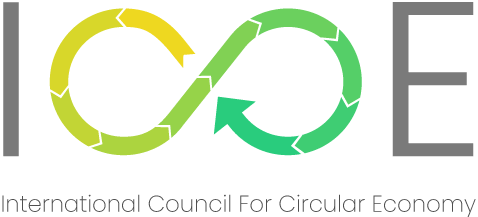Introduction
The realities of the world are undergoing a paradigm shift and newer things are gaining importance more than ever before whereas things and concepts which have worked so far are increasingly being discarded. and, these changes are ubiquitous and being observed in every sector and strategic responses. For example, in the context of India, a decade ago in pursuit of financial inclusion, new banking entities were being created and a decade later, the Merger & Acquisitions between the same banking entities are encouraged so as to minimize operational cost. Likewise, a decade ago, globally China – entry strategies were preferred whereas today China – exit strategies have become important, this indicates that the world is more dynamic than ever before and agility and ability to respond to needs of the hour is the only best foot forward. Accordingly, at this point in time, there is an unparalleled demand for sustainable solutions to meet which we need innovative models underpinned by an inclusive circular bio-economy.
The sustainability context
It’s often said that “waste isn’t a waste until we waste it” and there couldn’t be a more real statement. In modern days we often switch to a new phone and immediately the old phone gets classified as an e-waste until and unless there is a taker for it. At times, in the journey of e-commerce a product gets returned and then it faces a similar dilemma as well until it has an opportunity to get the status of refurbished and get reused. So, the world is in the midst of transformation where it has never seen before this high quantum of waste which is on a constant rising curve. Having said that, corporate actions are also on the side of increasing waste i.e. increasing consumption, and often discouraging repairs such that there is a re-purchase leading to higher revenues and that in a way guarantee employment to CXO’s by way of creation of shareholder value. In such a complex environment, someone must ensure that knowledge, research, science and innovation goes hand in glove with production, utilization and more importantly conservation of bio resources that make up bio-economy.
India’s Circular bioeconomy eco-system at a glance
A potential solution before India is to shift towards a circular bioeconomy system. The circular bioeconomy is an economic system that combines the principles of circular economy and bioeconomy. It focuses on maximizing the value of biomaterial resources as much as possible and minimizing waste generation. This approach utilizes renewable biological resources to produce food, materials, and energy, while also highlighting investment in human, social, natural, and physical capital. In a circular bioeconomy, the use of biomass plays a significant role in continuous production and contributes to the overall improvement of the economy. There are many favorable factors enabling it in India like the ecological diversity and demand, well-established R&D setup & industrial track record, skilled manpower, the government’s emphasis on promoting traditional knowledge and circular economy, and a favorable eco-system for commercialization that contributes to the growth of any country. The circular economy is a production and consumption model that aims to make the most of resources by eliminating waste and pollution, circulating products and materials, regenerating nature, extending the life of products, reducing the consumption of raw materials, recovering waste by recycling or giving it a second life. There are 5 key constituents of the related eco-system i.e. bio pharma, bio agriculture, bio industrial, bio energy, bio services. If we as a country can focus on these constituents, then we can achieve four important goals simultaneously:
(a) climate and energy goals
(b) improve food security and sustainability
(c) secure supply chains
(d) valorisation of wastes and residues.
Then, overall growth of the economy in a sustainable manner is nearly guaranteed.
Latest biomaterials and understanding the production consumption equations of the world
In today’s time, two fundamental questions are before us , one is about production and other is about the consumption pattern i.e. whether what we are producing is a bio-material or not, and whether our consumption patterns are circular or linear. Let’s understand this with the help of a few real time case studies.
If we talk about production, many overseas companies are using biomaterials to make new products. One of them is Spiber yamagata, a Japanese biotech unicorn that develops and sells brewed protein. This protein is made by feeding microbes plant-derived sugars such as glucose. The fermentation process converts biomass into proteins that can be processed into various forms for applications ranging from apparel to auto parts.
Another example is keel labs (formerly algiknit) a sustainable materials company addressing the highly polluting systems of textile production with aquaculture-based technologies. The company’s flagship product is kelsun™, a seaweed-based yarn with a significantly lower environmental footprint than conventional fibers, and biomason, a USA-based company, uses biology to build calcium carbonate cement. Carbon is used to form calcium carbonate crystals in the pore spaces between aggregate particles. Enzymatic processes from microorganisms replace the need for high energy, eliminating direct emissions. Similarly, there are many other companies like corumat, mango materials, mushroom packaging, nature works, etc.
India’s grassroots innovators are embedding sustainability principles in their work
It’s not the case that such instances are only being observed abroad. Instead, we see them in the context of India too and a step further these reflect in grassroots innovations of India. For example, the National Innovation Foundation (NIF)- India, an autonomous body of the Department of Science and Technology, Govt. of India supports grassroots innovations, and few amongst them happen to be biomaterial products.. For instance, few of them use biomaterials like clay, bio-waste, and plant-based dyes. Mitticool is a private company, led by grassroots innovator Mansukhbhai Raghavjibhai Prajapati and supported by NIF that uses terracotta clay to produce clay products like pots, cookware, tableware, building materials etc. many of these products are ISO certified and clay is non-toxic and eco-friendly also its porous nature allows it to absorb and release moisture, making it ideal for creating vessels that regulate humidity.

Another one is Padmavati Associates, a cooperative association of the artisans led by Shri C V Raju, a grassroots innovator who makes eco-friendly toys and other items with roots in plant-based dyes. These eco-friendly & non-toxic woodware products contain only vegetable dyes sourced from plants and trees. It is a unique combination of safety and good aesthetics with 100% natural elements. For his innovative work at the grassroots, the Government of India conferred Padma Shri to Shri C V Raju in the year 2023. There are several other examples of technologies where eco-friendly is the guiding mantra and results similar to mitticool and eco-friendly toys have been achieved. Prominent amongst these is United Nations Centre For Alleviation Of Poverty Through Sustainable Agriculture [CAPSA] & Economic And Social Commission For Asia And The Pacific [ESCAP] highlighting India’s deployment of outstanding traditional knowledge i.e. NIF’s poly herbal medication leading to eco-friendly control of tick infestation in dairy animals primarily cows. Likewise, mastirak gel is a herbal medication developed by NIF and subsequently commercialized through industry partner Rakesh Pharmaceuticals for curing mastitis in animals. NIF has also performed R&D on cow dung and developed a banana fibre rope machine so as to generate some new biomaterials.


Biomaterial derived from Banana Fibre: Selected portfolio of products supported by NIF
Reimagining the supply chains of the future
Let’s now address the second question relating to consumption patterns. In a linear model, we produce, consume and discard which is not a sustainable practice. Instead, we have to transition with the help of innovation such that we could adopt a circular model where making, using, reusing, remaking and recycling is the approach. In other words, we need to relook at the output – input relationship in the context of industry, encompassing all pillars i.e. large, medium, small and cottage industries. This is because large industries will be small in number but their production volumes are significantly high. At the same time, while cottage industries are characterized by smaller volume, their number is more so their economic contribution becomes equally important too. We need to redefine output – input relationships where outputs aren’t orphan anymore. Instead, output of one should be the input of another be it within the same industry or outside the industry. If we can accomplish this circular relationship, then a major part of the issue relating to waste gets resolved because then waste is only an intermediary temporary tag, and not a permanent one. On similar lines, we must rethink the relationship between waste and raw material. The larger question is, can waste originating from one industrial process be the raw material for another industrial process ? If the answer is yes, then it is a big relief. However, if the answer is no, then it is going to attract trouble for the environment of the future. in other words, we must reimagine the supply chains for the future.

(Padmavati Associates) :
Selected portfolio of products supported by NIF



(B) ICAR popularising NIF’s eco friendly control of tick infestation
Empowering the circular economy
Accordingly, from past years where use of linear economy was more to the present days where we are moving towards circular economy and hope in future will move totally on circular economy. Unlike the linear economy, which often discards products after a single use, the circular economy works on the principles of reuse and remanufacturing. products are designed to be disassembled easily, enabling components to be repurposed or refurbished. For this, we need to change our perception from waste to worth. The circular economy model emerges as a bonfire of hope and possibility in an era of environmental concerns and the imperative for sustainable practices. The journey from a linear to a circular economy is not just an ordinary shift—it’s a transformative movement that has the power to reshape how we produce, consume, and manage resources.
The road ahead: We must act ?
For India, and the rest of the world, a few years ago the supply chain equation underwent a paradigm shift which has given an unprecedented advantage to China. The dominance of China is to an extent that in 2024, when the world coined a new term “China + 1”, the question was who will be the +1 whether India, Vietnam or someone else ? It still had China as integral to the equation, whether it is an appreciable fact or not, yet it remains an accepted fact. The supply chains have an upstream and downstream side to it i.e. we have to create an eco-system and not address the supply chain issues in isolation. For example, if we have identified a biomaterial then that’s not even a job half done. Instead, that doesn’t solve any concrete problem per se. to do so, it must analyze the upstream supply chain i.e. the one supplies to it and downstream supply chain i.e. to which supply chain it is the source, and then when we take a holistic view of upstream, mid-stream and downstream collectively then alone we are poised to arrive at a difference. In other words, with a sense of urgency, biomaterials need to be scouted for everything such that it graduates from being an exception to a new normal, something contrary to the present trends !
REFERENCES
www.nif.org.in (National Innovation Foundation (NIF) – India)
https://www.ibef.org/industry/biotechnology-india (IBEF)
https://www.investindia.gov.in/sector/biotechnology (Invest India)
https://biotech-careers.org/company-core-activity/biomaterials (Biomaterials)
https://spiber.inc/en/ (Spiber yamagata)
https://www.keellabs.com/ (Keel Labs)
https://mitticool.com/ (Mitticool)
https://en.wikipedia.org/wiki/C._V._Raju ( C V Raju)
Press Release: Press Information Bureau (Padma Awards 2023 announced)
Press Release:Press Information Bureau (Polyherbal eco-friendly technology can combat tick infestation among dairy animals)
https://wownandi.com/ (Nandi Panchgavya – Cow Dung products store)
https://bananaropemdu.com/ (Rope Production Centre, Madurai)
http://www.uncapsa.org/ (UN – CAPSA)
https://www.unescap.org/ (UN – ESCAP)
https://icar.org.in/node/5781 (ICAR)
https://www.business-standard.com/podcast/international/what-is-the-china-plus-one-strategy-122072600052_1.html (China plus one)

Chief Scientist and Former Director
Mr Tushar Garg, Scientist
Ms Shubhamika Jha, Project Associate I
Dr. U. Lalitha Priya, Research Associate III
